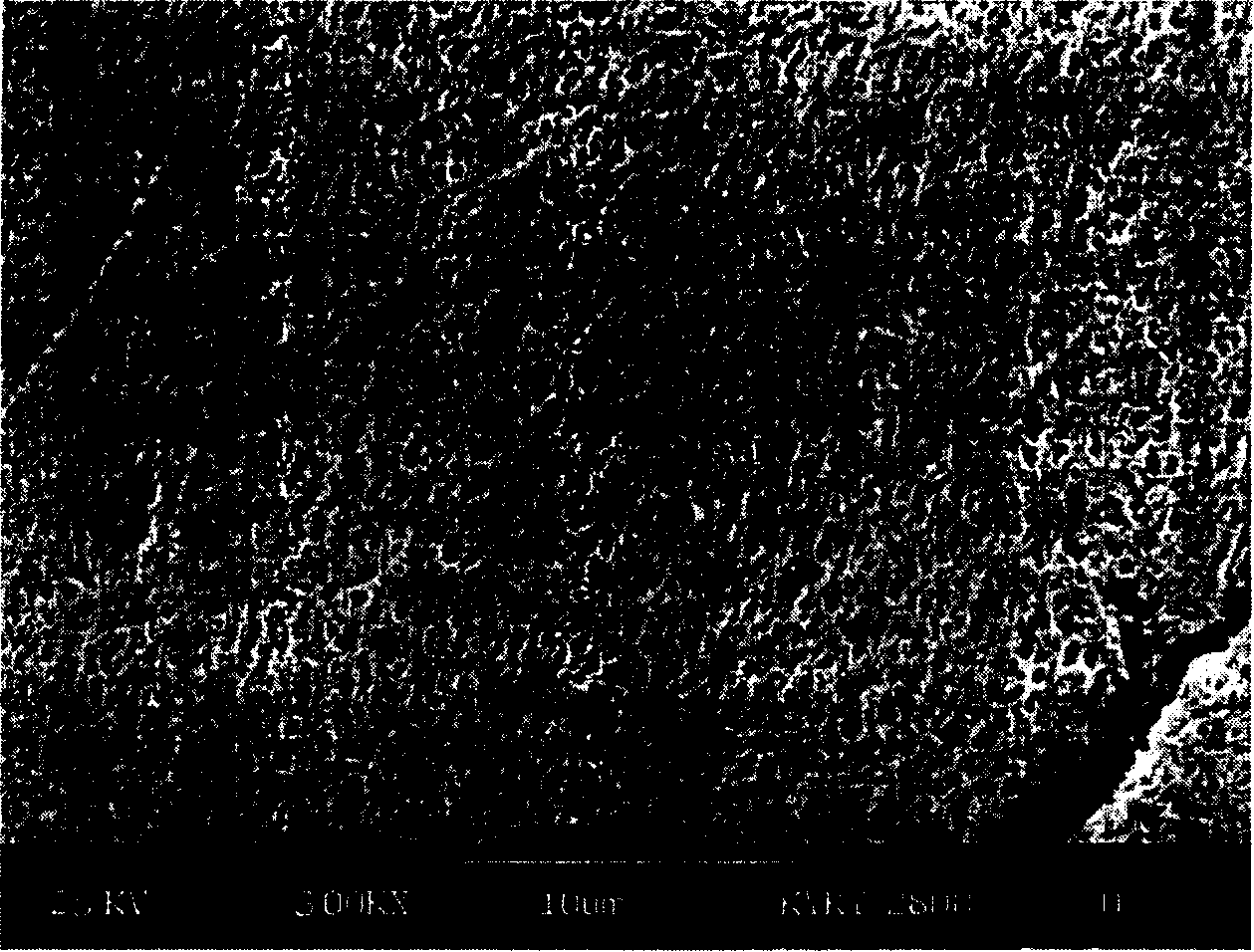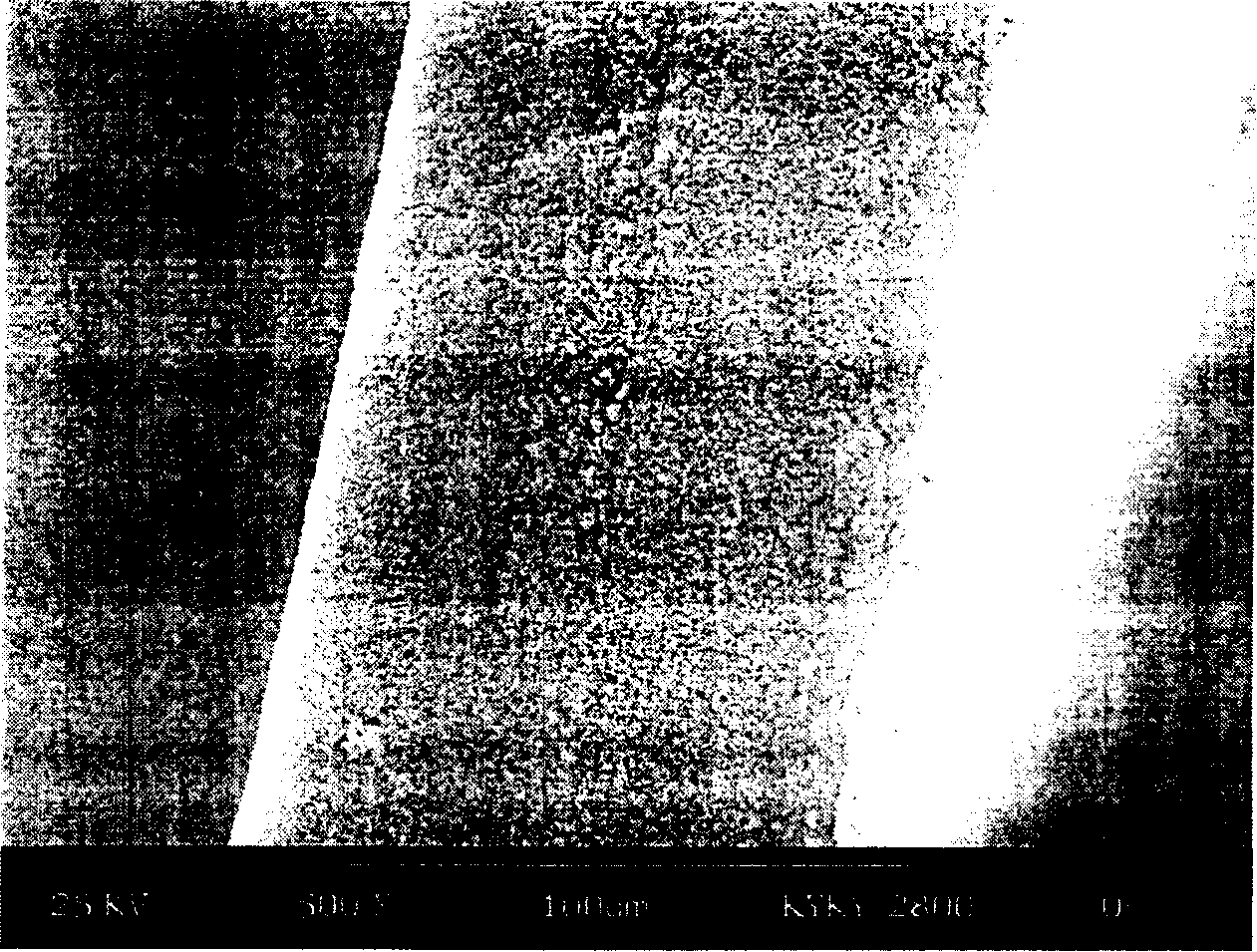Porous film made of polyunsymfluoroethylene, and its preparation method
A polyvinylidene fluoride, porous membrane technology, applied in chemical instruments and methods, membrane technology, semi-permeable membrane separation, etc., can solve the problems of uneven membrane pore structure, poor strength, and loose polyvinylidene fluoride spherulite accumulation. , to achieve the effects of environmental tolerance and good water permeability, high strength, and excellent light aging resistance
- Summary
- Abstract
- Description
- Claims
- Application Information
AI Technical Summary
Problems solved by technology
Method used
Image
Examples
Embodiment 1
[0030] Polyvinylidene fluoride-benzophenone system. The polyvinylidene fluoride benzophenone mixture with a mass concentration of 5% was sealed in a test tube filled with nitrogen, placed in an oven at 210°C, and fully dissolved for 24 hours. Thickness 0.13μm) scraping film, film thickness 150μm. The glass flakes were then quenched to 30°C. After cooling, place the glass slide carrying the film in 95% ethanol to extract the benzophenone. Ethanol was changed every 24 hours for a total of two changes. At this time, the polyvinylidene fluoride film can be peeled off from the glass sheet in a wet state, placed in the air, and dried. Electron microscope observation of the fracture (liquid nitrogen freezing brittle fracture) and surface structure, the electron microscope photos show that the membrane pore diameter is about 0.5 μm.
Embodiment 2
[0032] Polyvinylidene fluoride-benzophenone system. Seal the polyvinylidene fluoride benzophenone mixture with a mass concentration of 10% in a test tube filled with nitrogen, place it in an oven at 180°C, and fully dissolve it for 24 hours. Take out the glass sheet (thickness 0.13 μm ) on the scraping film. The film thickness was 150 μm. Quench to 80°C, put it in an environment of 0°C to cool completely. The benzophenone was extracted by placing the glass slide carrying the film in 95% ethanol. Ethanol was changed every 24 hours for a total of two changes. At this time, the polyvinylidene fluoride film can be peeled off from the glass sheet in a wet state, placed in the air, and dried. The fracture surface (liquid nitrogen freeze brittle fracture) and surface structure were observed by electron microscope. Electron micrographs show that the membrane pore diameter is about 0.5 μm.
Embodiment 3
[0034]Polyvinylidene fluoride-benzophenone system. The polyvinylidene fluoride benzophenone mixture with a mass concentration of 40% was sealed in a test tube filled with nitrogen, placed in an oven at 200°C, fully dissolved for 24 hours, and the high-temperature solution was squeezed out. 0.13μm) on the film. The film thickness is 200 μm. The glass flakes were then quenched to 0°C. After complete cooling, place the glass slide carrying the film in 95% ethanol to extract the benzophenone. Ethanol was changed every 24 hours for a total of two changes. At this time, the polyvinylidene fluoride film can be peeled off from the glass sheet in a wet state, placed in the air, and dried. The fracture surface (liquid nitrogen freeze brittle fracture) and surface structure were observed by electron microscope. Electron micrographs show that the membrane pore diameter is about 0.3 μm.
PUM
| Property | Measurement | Unit |
|---|---|---|
| electrical resistivity | aaaaa | aaaaa |
| pore size | aaaaa | aaaaa |
| pore size | aaaaa | aaaaa |
Abstract
Description
Claims
Application Information
 Login to View More
Login to View More - R&D
- Intellectual Property
- Life Sciences
- Materials
- Tech Scout
- Unparalleled Data Quality
- Higher Quality Content
- 60% Fewer Hallucinations
Browse by: Latest US Patents, China's latest patents, Technical Efficacy Thesaurus, Application Domain, Technology Topic, Popular Technical Reports.
© 2025 PatSnap. All rights reserved.Legal|Privacy policy|Modern Slavery Act Transparency Statement|Sitemap|About US| Contact US: help@patsnap.com



